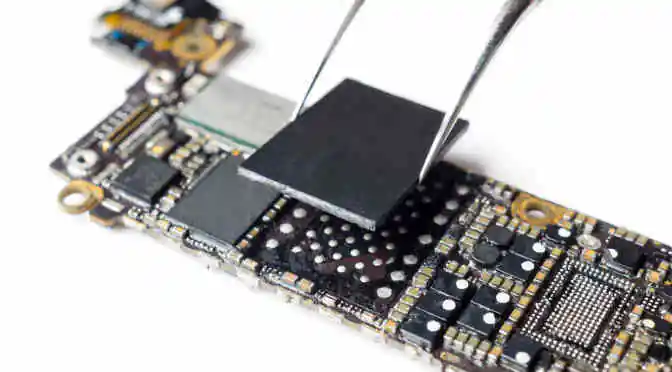High resolution videos, music, cameras, and games demand a higher density data storage solution. When it comes to the economical aspect, vendors are continuously looking for a low-cost storage system that has a fast write speed. NAND flash is in high demand precisely for this reason.
Read: Trends to Watch in the NAND Flash Market
How has NAND flash improved storage systems in mobile phones?
According to our industry experts, NAND flash has improved the data storage within mobile phones through:
- Multi-chip packages (MCP)
- Package-On-Package (POP)
- High-density embedded storage
Compared to RAM + NOR, NAND based MCP solutions provide non-volatile storage of data. This means, unlike in the past when DRAM memory was used, NAND memory retains data even when the power is off — making it ideal as storage for portable devices. Similarly, POP and high-density embedded storage chips reduce the number of chips employed in a mobile device, thereby saving space and simplifying the design.
Read: Smarter Mobile Devices Boosting NAND Flash Memory Market
Here are the top five names in the mobile NAND flash market that have redefined the way mobile phones are designed
1. Intel
The 3D NAND technology from Intel has transformed the economics of storage. Designed on a floating gate architecture, Intel’s NAND flash products have smaller cell size and a powerful memory array. This kind of framework provides greater protection from charge loss.
Recently, the industry giant has launched a 64-layer technology in its NAND flash products. Our industry analysts see this as a breakthrough from the 32-layer technology. The enhanced layers will provide the highest areal density and rapidly grow storage capacities in 3D NAND solutions.
2. Micron Technology
Micron has one of the broadest portfolios of memory and storage technologies. Its 3D NAND technology employs an innovative process architecture to provide three times better capacity of planar NAND technologies.
Its mobile TLC 3D NAND Media Kit is powered by 64-layer triple-level cell (TLC), which solves the storage performance challenge by reducing peak power consumption and enhancing reliability through floating gate cell architecture. Similarly, its 3D NAND Client SSDs Media Kit enables high capacity 2TB of client storage in a 2.5-inch form factor.
3. Samsung Electronics
A world leader in advanced memory technology, NAND flash from Samsung Electronics addresses the requirements of next-generation data processing and storage systems. Flash memory plays a major role in accelerating the speed at which information can be extracted for real-time analysis. Keeping this factor in mind, the mobile NAND flash designed by Samsung Electronics offers high data processing speed, low latency, and increased system scalability.
4. SanDisk
Since 1988, SanDisk’s innovations in flash memory and storage system technologies have provided customers with new and transformational digital experiences. It’s diverse product portfolio includes flash memory cards and embedded solutions used in smart phones, tablets, digital cameras, camcorders, digital media players and other consumer electronic devices, as well as USB flash drives and solid-state drives (SSD) for the computing market.
SanDisk’s 128 Gb NAND flash memory chip, one of world’s smallest chips, is built using the 19 nanometer (nm) process technology.
5. SK Hynix
SK Hynix launched its first-generation 3D NAND in 2014. Since then, the company has launched several versions of 3D NAND solutions. Early this month, SK Hynix completed the development of its enterprise-grade SSDs based on its 512 Gb 72-layer 3D TLC NAND chips.
A leading name in the memory semiconductor industry, SK Hynix’s U-shaped NAND cell architecture is seen by several industry experts as a breakthrough in NAND flash technology. Multiple industry experts see immense potential in this architecture and are predicting a new wave of innovation in NAND flash technology.



